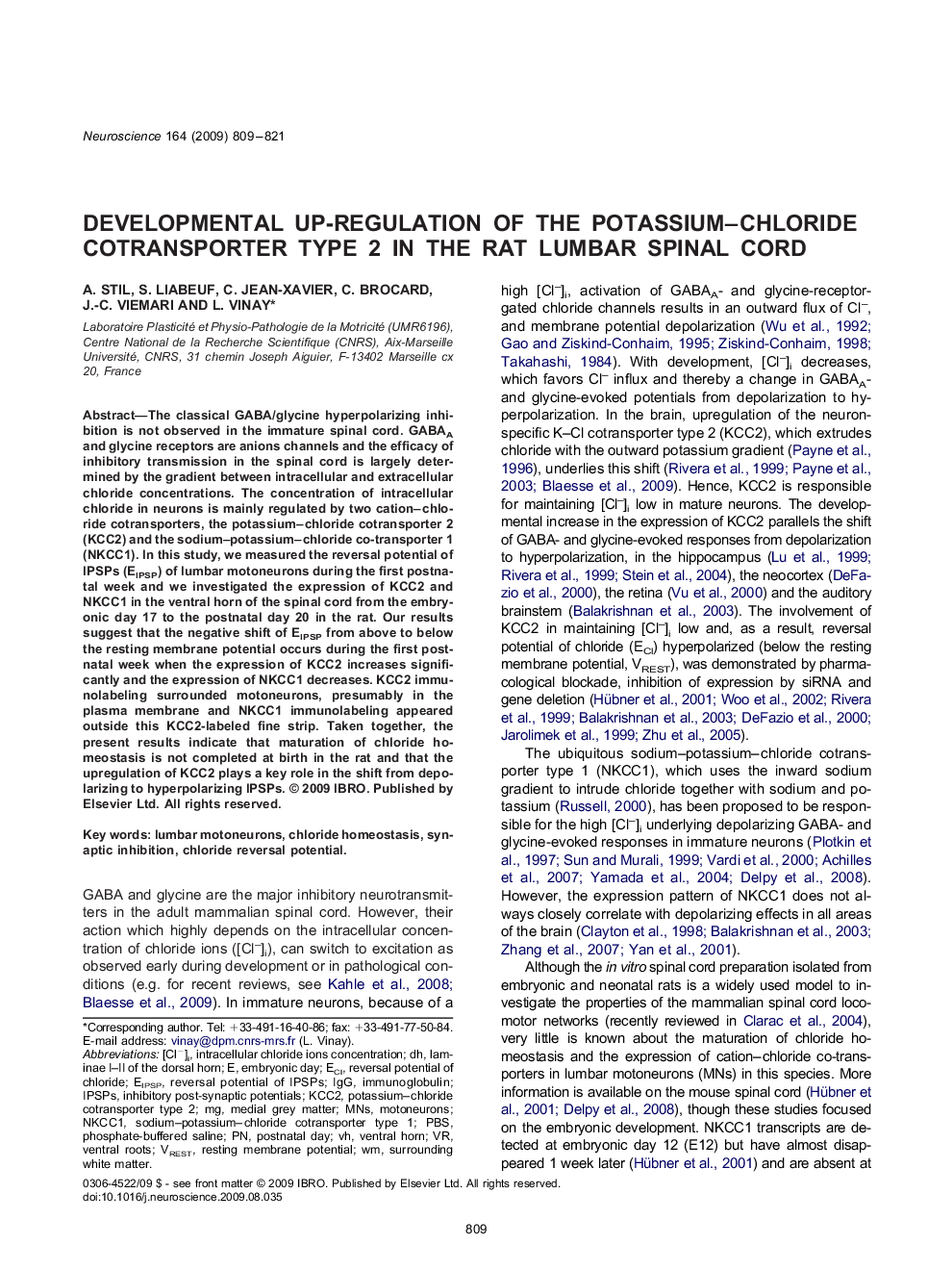| Article ID | Journal | Published Year | Pages | File Type |
|---|---|---|---|---|
| 4339828 | Neuroscience | 2009 | 13 Pages |
The classical GABA/glycine hyperpolarizing inhibition is not observed in the immature spinal cord. GABAA and glycine receptors are anions channels and the efficacy of inhibitory transmission in the spinal cord is largely determined by the gradient between intracellular and extracellular chloride concentrations. The concentration of intracellular chloride in neurons is mainly regulated by two cation–chloride cotransporters, the potassium–chloride cotransporter 2 (KCC2) and the sodium–potassium–chloride co-transporter 1 (NKCC1). In this study, we measured the reversal potential of IPSPs (EIPSP) of lumbar motoneurons during the first postnatal week and we investigated the expression of KCC2 and NKCC1 in the ventral horn of the spinal cord from the embryonic day 17 to the postnatal day 20 in the rat. Our results suggest that the negative shift of EIPSP from above to below the resting membrane potential occurs during the first postnatal week when the expression of KCC2 increases significantly and the expression of NKCC1 decreases. KCC2 immunolabeling surrounded motoneurons, presumably in the plasma membrane and NKCC1 immunolabeling appeared outside this KCC2-labeled fine strip. Taken together, the present results indicate that maturation of chloride homeostasis is not completed at birth in the rat and that the upregulation of KCC2 plays a key role in the shift from depolarizing to hyperpolarizing IPSPs.
